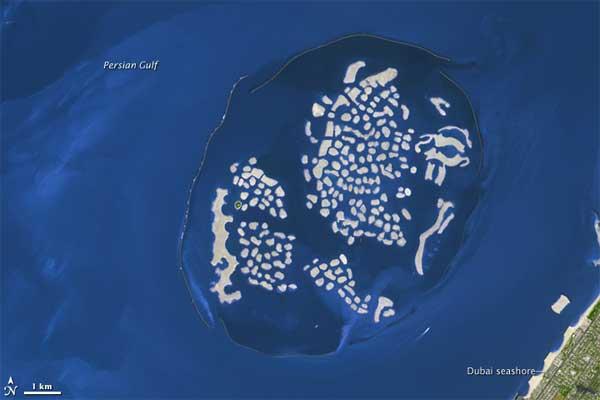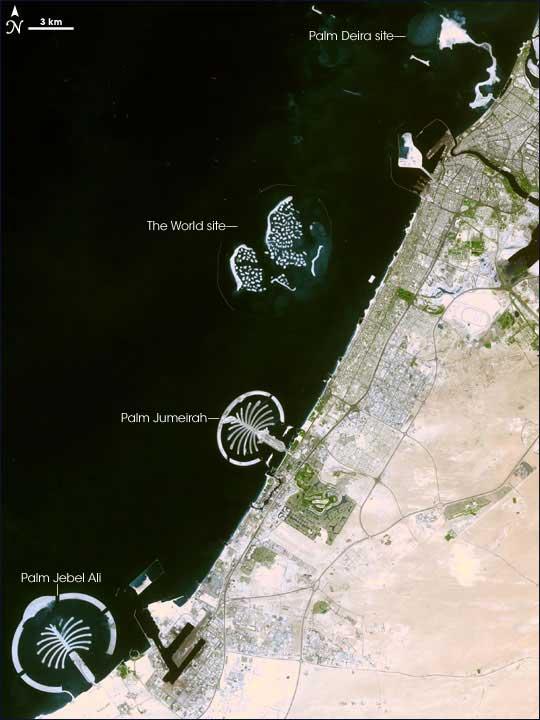An Artificial World Sticks up from the Sea


The cluster of islands in this NASA satellite image make up the World Archipelago, an example of how man can mold nature.
The construction of the Archipelago and other shaped islands are an effort by Dubai - one of the seven emirates of the United Arab Emirates - to increase beachfront tourist opportunities around the Persian Gulf . The islands were created by dredging up sand from the sea floor and span an area of about 4 by 6 miles (6 by 9 kilometers).
The groups of islands that make up all of the world's continents are protected by a rock breakwater, which keeps Gulf waves from eroding the artificial islands away.
Only one of the islands - in the western portion of "Greenland" - has been landscaped and appears a lush green in color.
Other man-made islands off the coast of Dubai are shaped to look like giant palm trees.
Dubai is also home to the world's tallest building, the Burj Khalifa, which is 2,717 feet (828 meters) high.
Satellite technology has played a role in the construction of these islands, as the sand-spraying ships rely on Global Positioning System (GPS) satellite readings to locate their targets.
Get the world’s most fascinating discoveries delivered straight to your inbox.
Due to extensive experience with land reclamation in their own country, Dutch scientists also assisted with some of the island construction.




